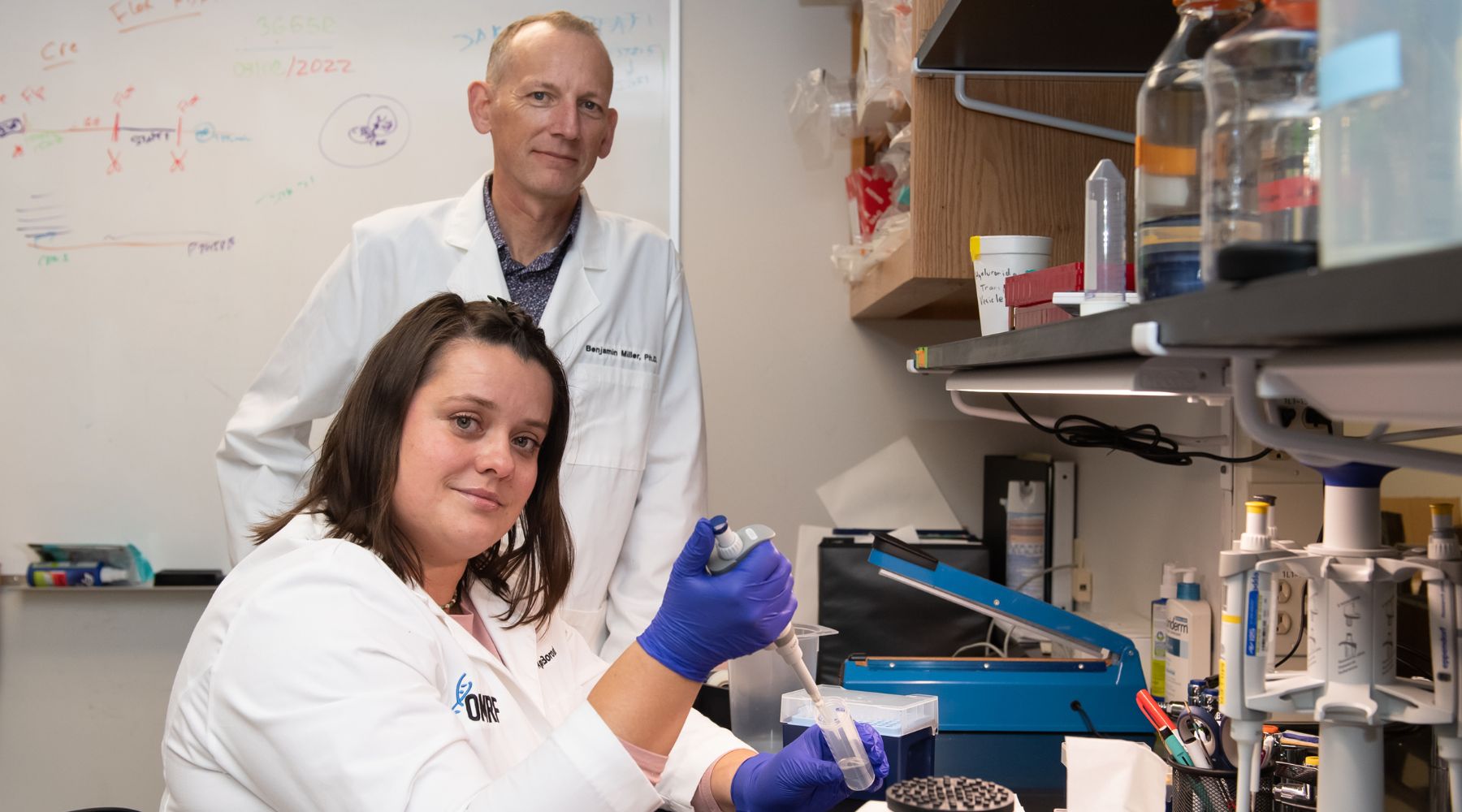An Oklahoma Medical Research Foundation scientist has received nearly $2 million to advance experiments aimed at preventing age-related muscle loss.
The grant from the Hevolution Foundation allows OMRF scientist Benjamin Miller, Ph.D., to build upon a recent discovery that defied conventional scientific wisdom.
That discovery, made with postdoctoral researcher Aga Borowik, Ph.D., determined that DNA continues to replicate in mature skeletal muscle cells. For the previous 65 years, muscle physiologists believed these cells stop making new genetic material upon reaching maturity.
“Our finding was revolutionary, but it left us with so many new questions, such as whether it happens in some muscle cells but not others,” said Miller, who holds the G.T. Blankenship Chair in Aging Research at OMRF. “Our main question now is, how important is it that these particular cells replicate DNA? Is it something that can be manipulated? Is it something that we could leverage to help us sustain or facilitate muscle growth? Those are the questions we’ll address through this grant.”
Beginning as early as our 30s, our muscles begin to lose mass, strength and function at a rate of 3% to 5% per decade. Eventually, this natural atrophy, called sarcopenia, can lead to falls and fractures and reduce one’s ability to perform daily tasks.
Sarcopenia can be offset through strength training. Conversely, scientists believe inactivity and an unhealthy diet exacerbate it.
While no therapies currently exist to prevent sarcopenia, Borowik and Miller believe their research ultimately could change that. But first, they need to fully understand the context of their prior discovery.
“We’ll be studying muscle in various age groups to determine whether DNA replication slows down over time, or perhaps even stops,” Miller said. “If it does stop, that could be a contributing factor to sarcopenia.”
This study will involve a new microscope at OMRF that provides a 3D image of a muscle cell.
“Our long-term hypothesis is that DNA synthesis in these skeletal muscles cells can be harnessed to increase muscle growth as we age,” Borowik said. “What we discover in these new experiments will tell us where this research goes next.”
“Dr. Miller’s research on endoreplication of myonuclear DNA in mature skeletal muscle cells offers us a new perspective on possible mechanisms leading to decreased muscle function with age,” said Felipe Sierra, Ph.D., Hevolution’s Chief Scientific Officer. “Hevolution‘s prime objective is to promote further research around uncovering the foundational mechanisms behind biological aging. We are steadfast in our belief that by examining the root causes of aging, rather than solely focusing on its associated diseases, we can usher in a brighter future for humanity.”
Miller’s Hevolution Foundation grant is HF-GRO-23-1199166-33. His lab previously received funding from the Oklahoma City-based Presbyterian Health Foundation for preliminary research.
New technology at OMRF allows scientists to view an individual cell, including its nucleus, within muscle tissue.



